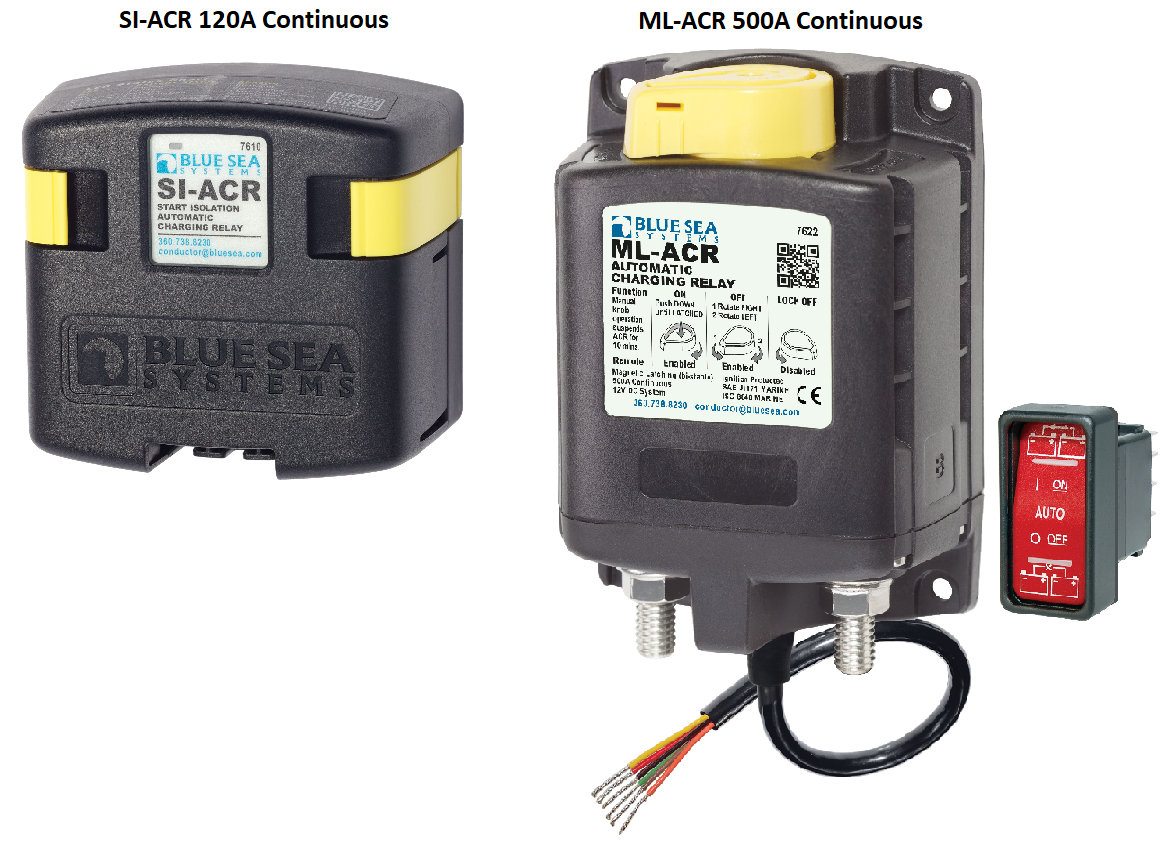I've been trying to understand how the battery switch panel works in my 2007 H41AC - I believe that Blue Sea Systems manufactured the panels for Hunter. This panel has two battery switches, both on/off, labeled Start and House. When I turn the Start battery switch to the Off position, the meter on the DC panel reads zero volts for the start battery as expected and the meter shows a reasonable voltage when the Start battery switch is set to On. However, the position of the House battery switch does not have a similar effect - I see no difference at all between the two positions (and, yes, the shore power was turned off so that the Xantrex inverter/charger was not supplying DC power). My conclusion is that the House battery switch is faulty (failed in the always on mode) but I need to disconnect some wires to test that theory.
This investigation has caused me to wonder about the source of the 12 V signal that energizes the solenoid switch that connects the start and house banks in parallel. The attached diagram depicts a 16 ga. yellow/red wire connected to one terminal and a 16 ga. yellow (battery negative, presumably) connected to the other. One possibility is that the activating signal is the alternator output. This would allow both the start and house banks to be charged by the alternator when it is producing power. Another possibility, perhaps less likely, is that it is activated by having the ignition switch on.
Does anyone know how the solenoid switch is wired on their boat?

This investigation has caused me to wonder about the source of the 12 V signal that energizes the solenoid switch that connects the start and house banks in parallel. The attached diagram depicts a 16 ga. yellow/red wire connected to one terminal and a 16 ga. yellow (battery negative, presumably) connected to the other. One possibility is that the activating signal is the alternator output. This would allow both the start and house banks to be charged by the alternator when it is producing power. Another possibility, perhaps less likely, is that it is activated by having the ignition switch on.
Does anyone know how the solenoid switch is wired on their boat?


